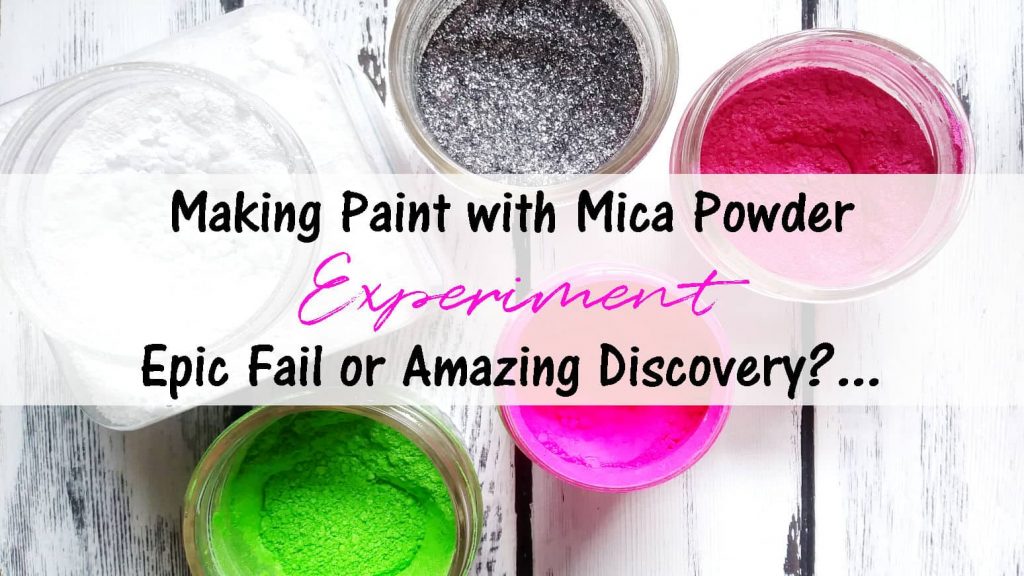I’ve been toying with the idea of making acrylic paint with mica powder for a while now. I have quite the collection of micas because, once upon a time, I made soap professionally. Since then, my micas have just been sitting there…looking all pretty and stuff…softly weeping from loneliness. Well, friends, today’s the day I bring my micas out into the light and give them a little love and attention!
In addition to using micas, I’m also going to experiment with two other colorants, one that is used by every artist (at least, every artist I personally know) and another paint color that’s gaining popularity. If you guessed titanium white and neon pink, you’re right! (and you may be a mind reader….what am I thinking now?…. how about now?)
I figure I’ll go ahead and do the experimenting, sharing my process and findings with you, so you can learn everything that goes into making acrylic paint. Let’s get started!
In This Article...
First Thing’s First!
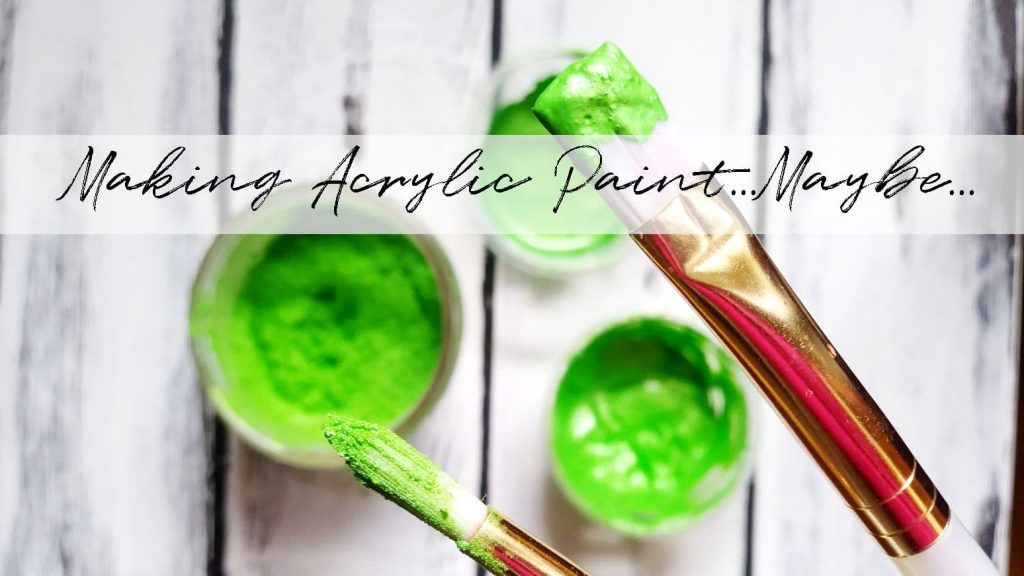
Let’s start at the beginning and talk about how acrylic paint is made. Basically, acrylic paint is a mixture of pigments (colors) + binder (acrylic polymer – a flexible and strong plastic) + vehicle (water – keeps paint in liquid form until it evaporates/paint dries). You can read a more detailed explanation of how acrylic paint is made on the Liquitex website.
So, based on the above equation, I need to figure out which materials I’m going to use for each part of the acrylic paint mixture:
- Pigment – various micas
- Binder – Golden Gloss Glazing Liquid and Golden Extra Heavy Gel (Gloss)
- Vehicle – Purified water
Note: I’m really just using the water to disperse the micas so it doesn’t get clumpy. I think, the less water you use the better.
Equipment Needed
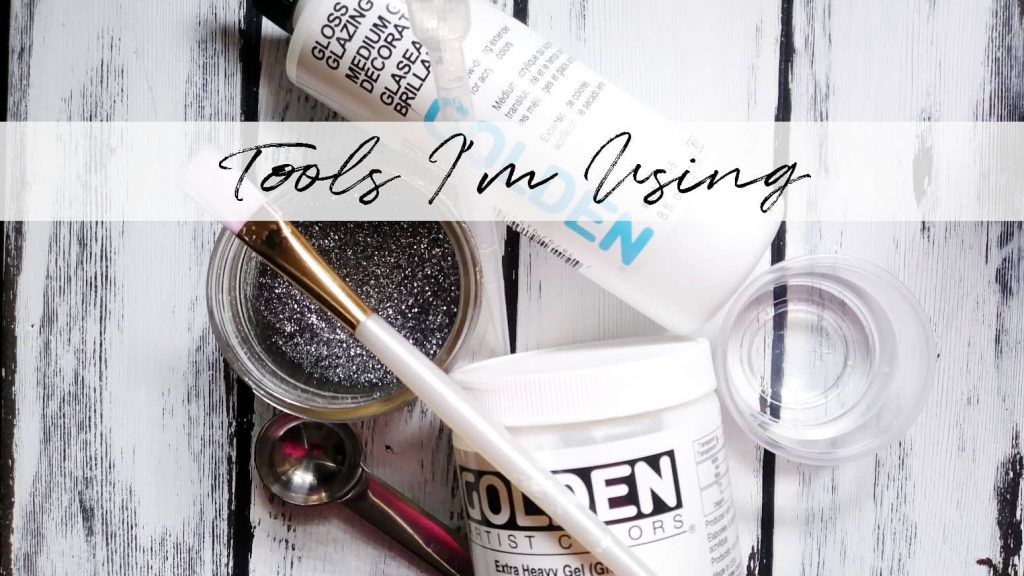
- Small condiment cups with lids
- 2 teaspoons (one for the binder and the other for the pigment)
- Popsicle sticks
- Micas
- Titanium Dioxide
- Neon Pink pigment
- Glazing liquid
- Heavy gel
- Purified water
- Pipette (for adding water to the micas before adding in the binder to make it easier to combine the two)
- Paper
- Paintbrush
- Jar of clean water
Specifics of the Experiment
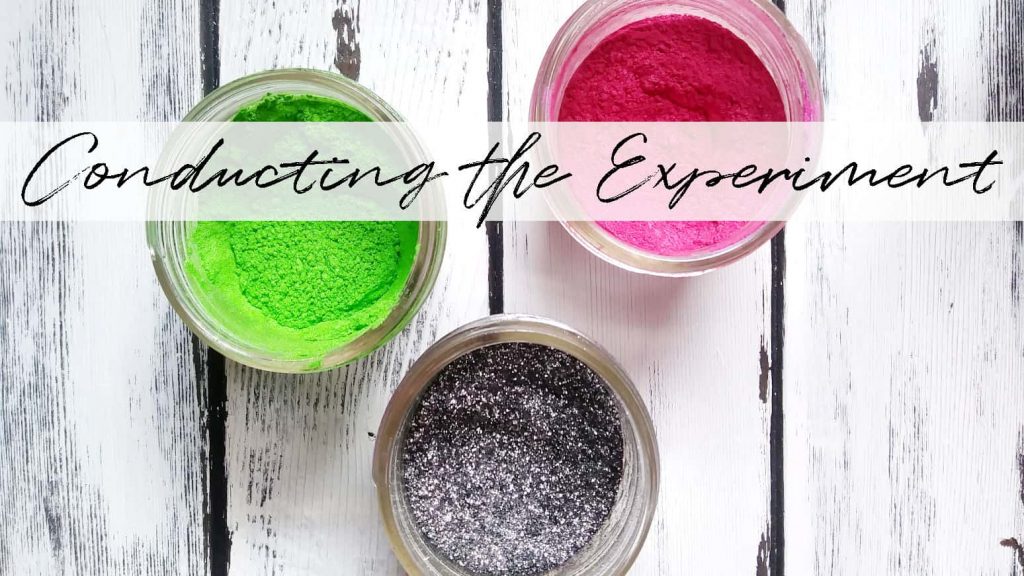
For the experiment I’ll be using Gloss Glazing Liquid and Extra Heavy Gel acrylic paint mediums, both by Golden, and the following steps will be taken for each medium:
- Add 1 mL of purified water to 1 tsp mica
- 1 teaspoon of binder to 1 teaspoon of mica
- Swatch of dried paint color
- Another swatch of dried paint color over a Mars Black paint line to check the transparency of each color
Note: The same process will be used for the other pigments
Making Acrylic Paint with Mica Powder and Golden Extra Heavy Gel (Gloss)
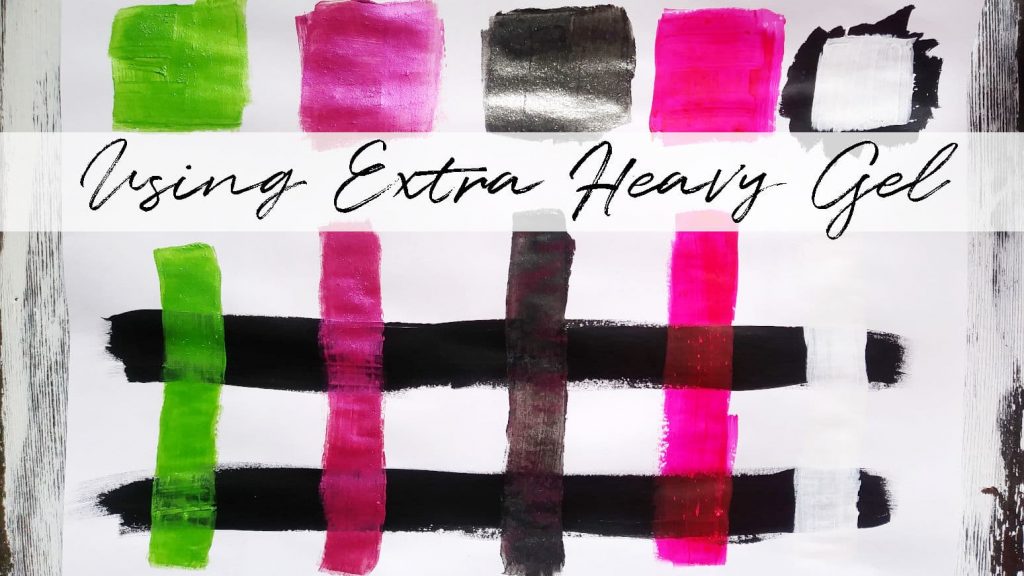
Right off the bat, I can tell you, it took way more water to mix the Golden Extra Heavy Gel in with the mica. The gel is very thick and kind of rubbery feeling so it resists the urge to mix but it does eventually get there! You just have to put your back into it and stir, stir, stir!
You can see, in the photo above, that the finish of the medium you use, when making acrylic paint mixed with mica powder, will significantly determine what the final finish will be. Since both of the mediums I used have a gloss finish, that made everything really shiny except the Titanium white.
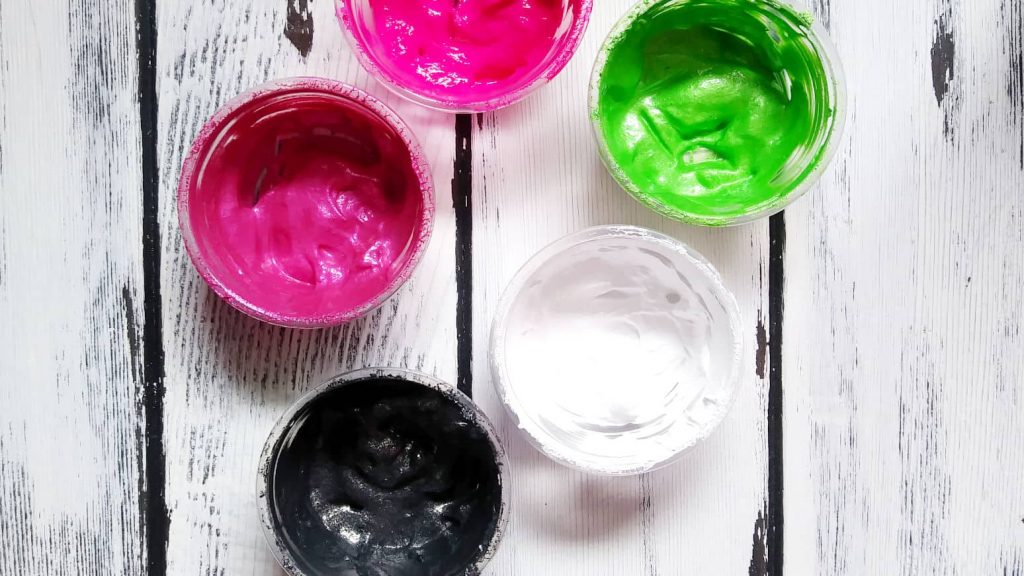
I had to add more water to this paint because it was so thick. Although, if you plan on making acrylic paint to use with a palette knife, and wanted your painting to have lots of texture, I think you’d be very happy with the consistency. It works great with brushes too. gritty pieces in it.
Can you see the small clumps in the neon pink? Yeah, it really didn’t like mixing with the water at all. Next time I try making acrylic paint with this pigment I think I’ll try mixing it with a small amount of glazing liquid first before mixing it with the extra heavy gel medium.
With the uber-shiny black metallic mica, it ended up with a kind of foam-like consistency but I’m pretty sure it was because of the glitter. I think this color could have used something to thin it out even more. Maybe Floetrol???
Making Acrylic Paint with Mica Powder and Golden Gloss Glazing Liquid
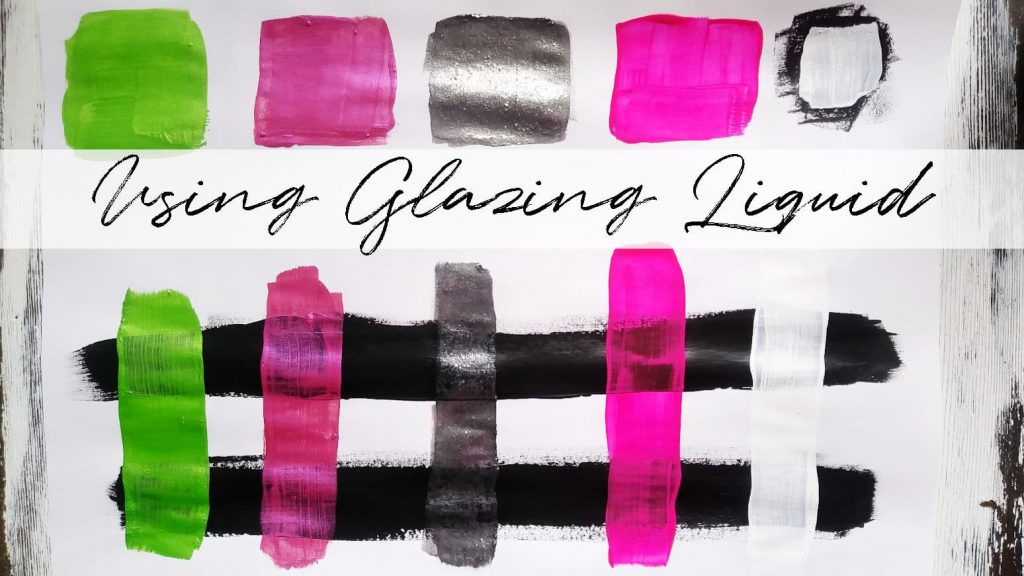
This medium was way easier to work with! The colorants mixed in fairly easily and the consistency was more like craft paint.
The biggest issue with using glazing liquid is that it made the paint very transparent which does make sense since it’s designed to create glazes over other paint colors.
I think making acrylic paint with mica powder and glazing liquid would be a fun effect as an accent color on a black and white painting. Or, if you were doing an abstract and wanted to use a shiny drip pattern.
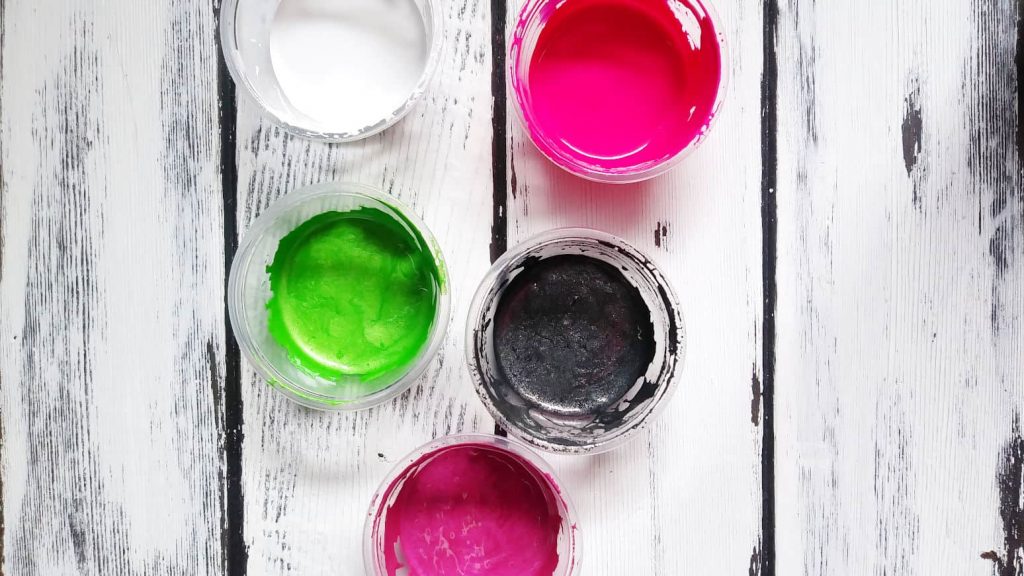
As a side note, it is much better to add water to the titanium dioxide first before adding any medium. This helps it to dissolve into a liquid form before moving on in the process. I tried adding just one mL of water and stirring but that was a disaster because the titanium dioxide almost has a chalky feeling so it just soaked up all the water and started to clump and stick to the popsicle stick.
Final Thoughts on Making Acrylic Paint
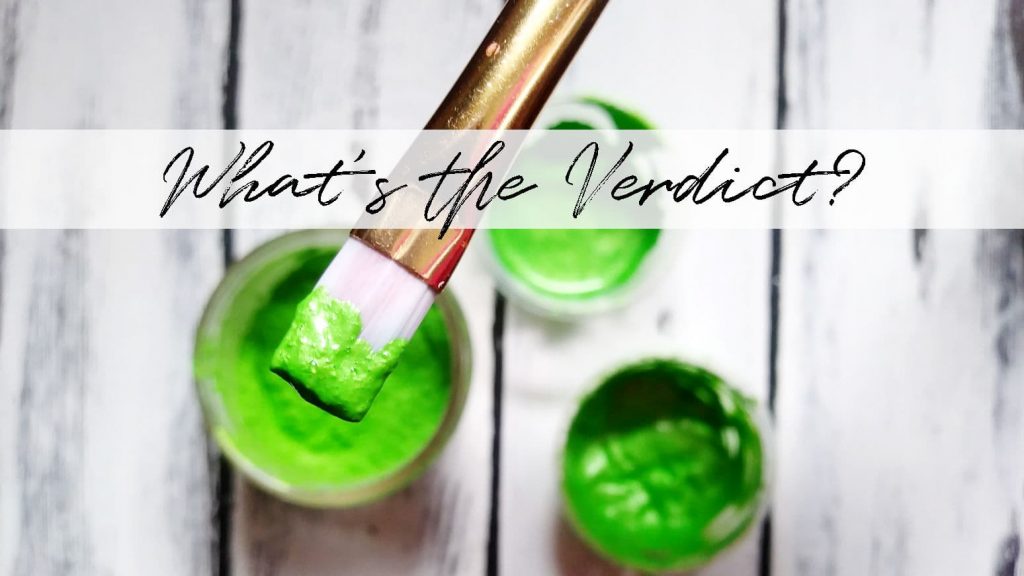
Making acrylic paint with mica powder, neon colorant, and titanium dioxide was really interesting but very time consuming because of the stirring involved. I have seen people mixing it into small bottles and shaking it up as well as using a mini mixer/frother. Even still, I think the best way to use these paints would be in small doses.
I could see using them to create extra shine if you were painting something that should be metallic or glossy by nature. They would also look fantastic in an abstract or a paint pour! I mean, can we take a minute to gaze at the beauty of the black sparkly mica paint? *Insert heart eyes emoji here*
If I continue making acrylic paint with mica, I would invest in a mini milk/coffee frother (pictured below) to stir up the colorants. It would make quicker work of it than using a popsicle stick, that’s for sure!
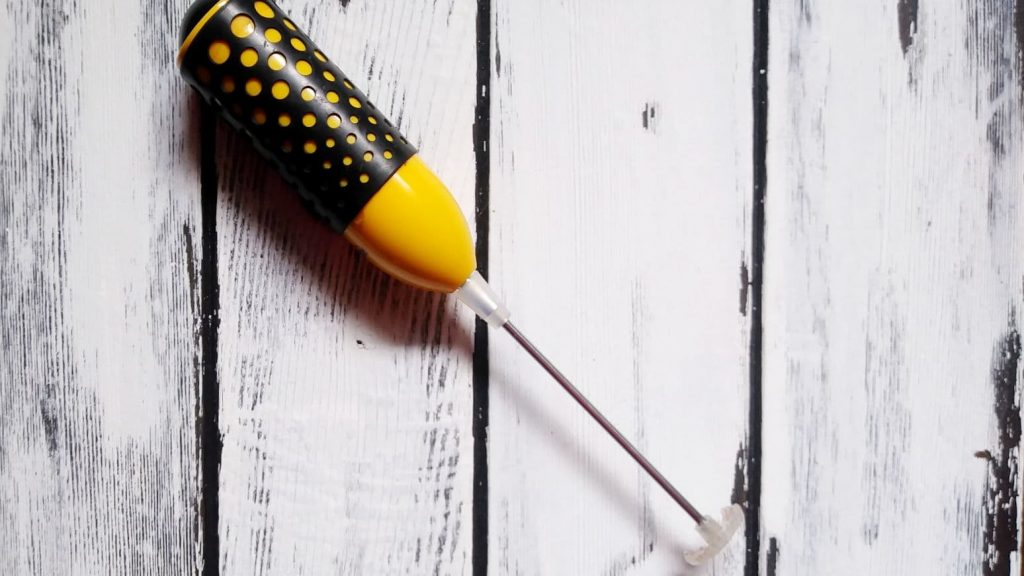
I’d also like to try using different mediums and maybe mixing the mediums to come up with that perfect buttery consistency that I love about heavy body paints.
If you do decide to try making acrylic paint, here are some of my favorite places to get micas:
- Nurture Soap (all of the micas I used in this experiment came from them!)
- Mad Micas
- Voyageur Soap & Candle (Canadian!)
Let me know in the comments below if you’ve ever made acrylic paint with mica. I’d love to know your process and what you thought of it!
For more color fun, check out my post “Color Psychology and Art”.

Meet Sara, a seasoned veteran in the world of art. With a knack for mixing paints to unveil breathtaking new hues, she’s adorned countless commissions and independently captivated art enthusiasts with her creations. Having spent over a decade immersed in the realm of art gallery management, Sara’s insight into the intricacies of the art scene shines through her work.
But don’t let her impressive résumé fool you – Sara’s approach to art is as lively as her palette. Known for her wit and humor, she infuses her passion for painting with a playful spirit, making every stroke a delightful adventure. As a dedicated mentor, she’s committed to guiding her fellow artists towards success, always staying ahead of the curve with the latest techniques and trends.

